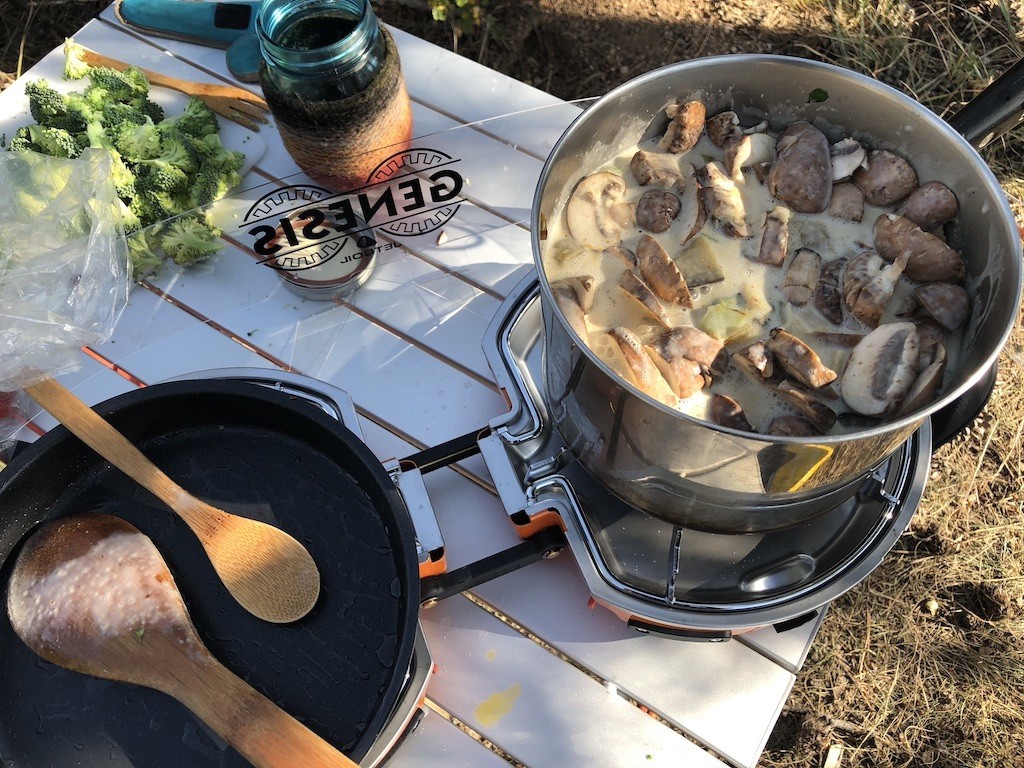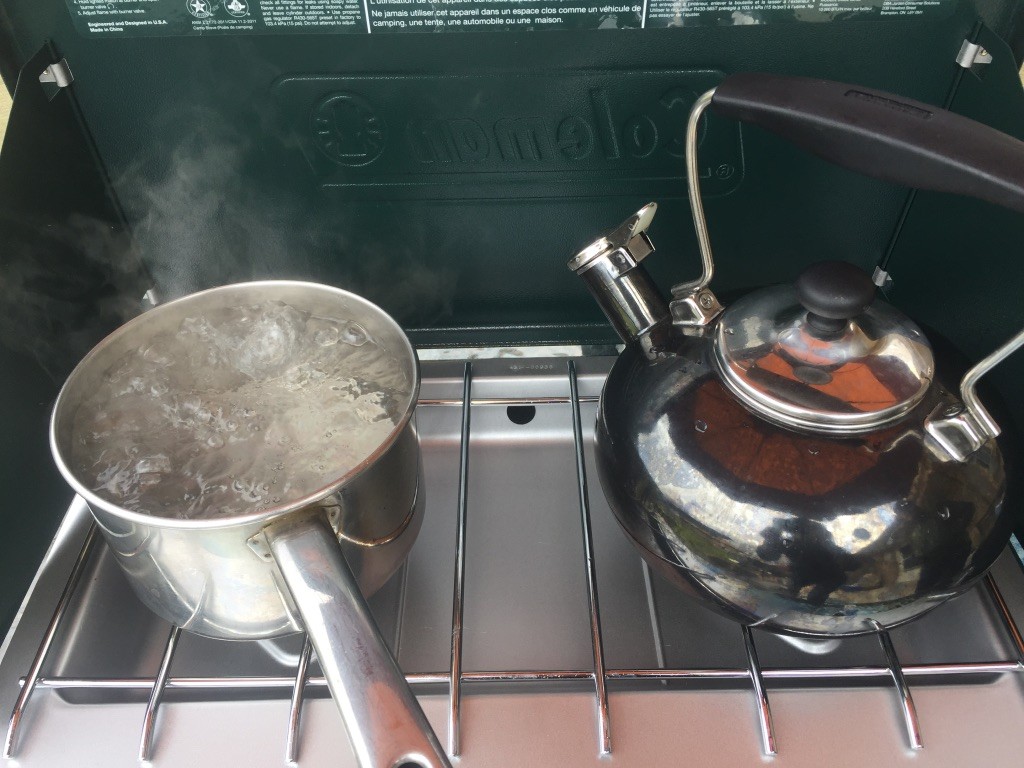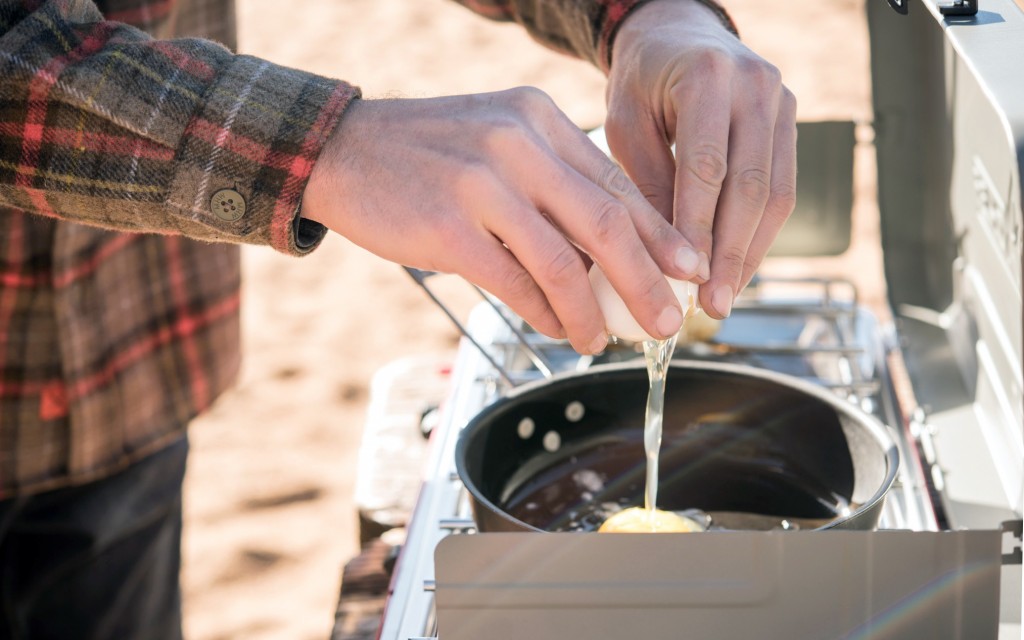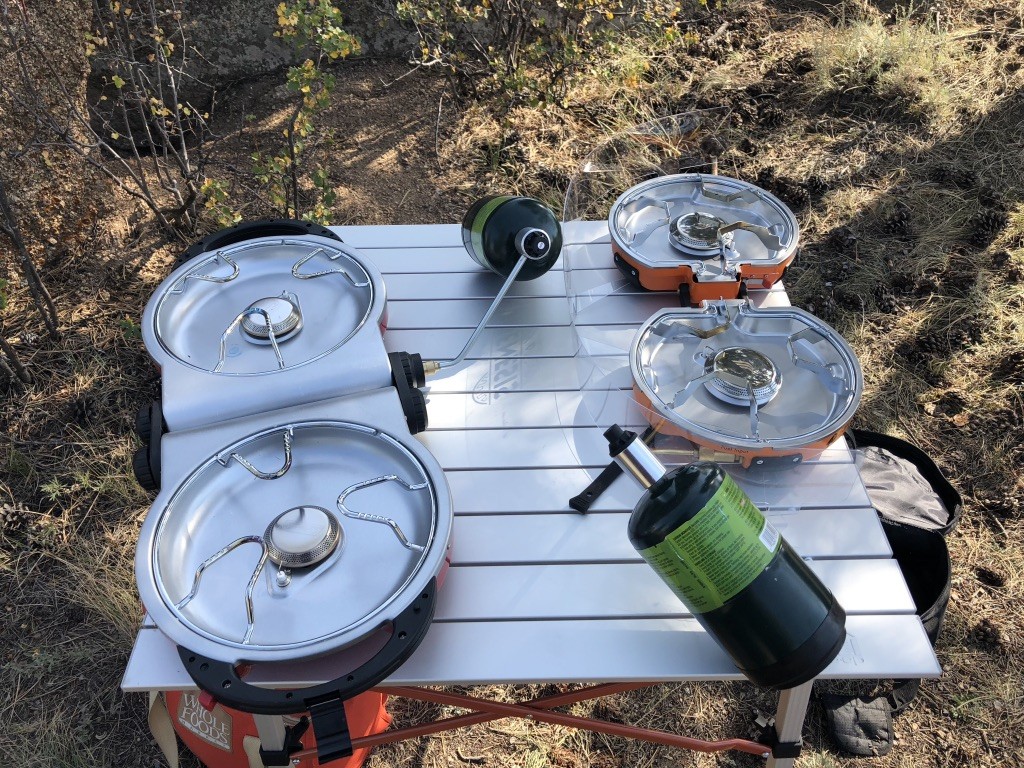Who's Testing This Stuff?
We began our testing process by tracking down the right group of people. We sought out a dedicated bunch of foodies whose passions and livelihoods range from cheffing and permaculture to engineering and carpentry. All of them are accomplished campers, climbers, or homesteaders who love to eat and take pride in the food they prepare and share with others. This elite team cooked, boiled, fried, simmered, roasted, dirtied, and abused all the stoves in this review over several rigorous months and many long cook-offs.
Our testers had varied prior experience with car camping stoves, from relative newbies to die-hards with a locked-in system that is not likely to change. This gave us an eclectic and broad testing team that helped highlight what might confuse a person new to camp cooking and also what less-than-obvious things to look for in a stove. All our testing was conducted at high altitudes, from the Rocky Mountains of Colorado and the red rock deserts of Utah to beautiful and breezy Lake Tahoe in California.
Here's a quick rundown of how we assessed and tested each rating metric:
Boil Time
We put these stoves to the test by performing multiple water-boiling tests in varied weather to assess the boiling power of each stove. To be as objective as possible with our ratings, we evaluated each stove's power and wind resistance by doing two boiling tests in our lab (aka our garage) at 5,000 feet in elevation. For our first test, we used a box fan to generate 2-4 mph of constant "wind," as measured by a pocket anemometer. Then we time how long each stove takes to boil 1 liter of 58°F water in a 1.7-quart kettle. We sought out a whistling kettle to be more precise in measuring how long it took for each round to finish boiling water. Some stoves made the kettle whistle, but only weakly. Either way, once the kettle whistled, we stopped the clock. This test gave us some data to evaluate how effectively each stove heated water in the wind, and when considered adjacent to their windless boil time and their BTUs, it presents a good picture of how well the stoves do in variable conditions.
After our windy test, we do another round of wind-less boil testing. What makes our stove review invaluable is that each of our boiling tests reflects real-world use and applications, as well as a consistent and objective evaluation of their performance head-to-head. Many manufacturers boast high BTUs and wicked-fast boiling times, but they aren't transparent about how much water they boil or the elevation at which they do their tests. Many of these tests take place in controlled environments and are often performed at sea level. This is why our reviewers test stoves at disparate altitudes and in variable weather conditions. This means we can provide you with practical data to get a better sense of how each stove functions in real-life scenarios.
Fuel Efficiency
We tested fuel efficiency alongside our boil tests in our garage "lab." While we aren't scientists, we did try to be as consistent and objective with these tests as possible, so you can get a sense of how efficient each stove proved to be in a more controlled environment. Before starting each boil testing round, we weigh a new fuel canister. Then we do the windy test. We start with this test to give each stove a fair shot because stoves are less fuel efficient when getting blasted by wind, and fuel efficiency goes down as the fuel bottle empties. After doing the windy test, we weigh the bottle again before the wind-less boil test. We wrap things up by weighing the canister one last time. Once we have the pre-test, mid-test, and post-test fuel canister weights, we can calculate how much fuel was used in each boil test by subtracting the mid-test weight from the pre-test weight and then again subtracting the post-test weight from the mid-test weight. This gives us a sense of how much fuel, by volume, was burned in the fuel test. From there, we calculate the percentage of fuel consumed by dividing the fuel used by the pre-test weight (or the mid-test weight for the wind-less test). We do this final calculation because not every new bottle of fuel has the exact same amount of fuel. Additionally, some of the stoves use butane, others propane, and some of the free-standing stoves require a refillable propane tank (like you would use with a barbeque grill). Butane canisters don't weigh the same as green propane canisters, and these pale in comparison to how much a refillable tank weighs. Thus, capturing fuel use in a percentage gives us a metric we can use to compare each of the stoves.
Simmer Ability
We assessed simmering by making a point to cook delicate, nuanced food items such as eggs, bacon, pancakes, rice, and sautéed vegetables. If a stove cooked too fast or hot, we ended up with burnt-on egg messes, over-crisped bacon, pancakes with raw centers, al dente rice, and charred-instead-of-caramelized onions. The models that scored the highest in this metric were able to provide a refined cooking experience, more like a gas range at home.
Ease of Use
This metric is pretty straightforward but somewhat subjective. To determine ease of use, we consider how easy it is to set up and clean each stove, as well as how user-friendly the features are on each. While evaluating this metric, we kept a number of things in mind. We pay extra attention to the set-up process, noting what was easy or difficult, intuitive or confusing, and pleasant or annoying. We tested each auto-ignitor dozens of times. We made note of any additional steps, tools, or spare parts required for each stove. None were too complicated, but we did find minor differences in the set-up process that played a role in our overall cooking experience and enjoyment.
We also considered how easy each stove was to clean. As we cooked with the stoves, they got dirty, greasy, and grimy. When cleaning time came around, we noted how easy each model was to disassemble and scrub clean. Most of the contenders are super straightforward, but a few have extra steps, weird design quirks, or recesses you can't access. Details about all of this appear in each individual product review.
Portability
Scores for this metric were determined by measuring and weighing each model, as well as by carrying them around and packing them into our cars. Obviously, the bigger stoves score lower for portability than the small compact models. This category might be crucial for you if you have a tiny car and only cook for yourself. Or this might not matter at all because you cook for big groups and have a big truck. This metric is weighted less than categories such as time to boil and wind resistance for this reason.








